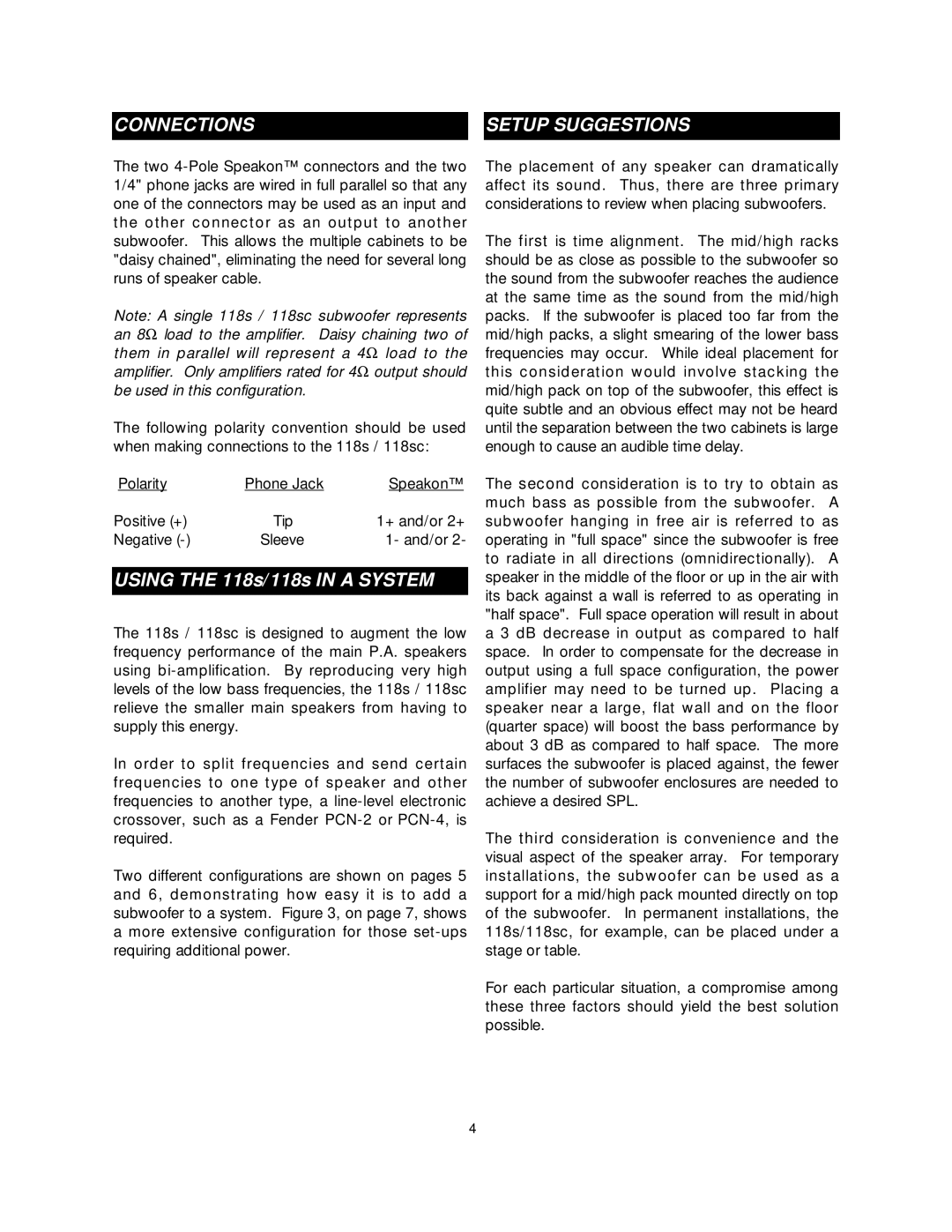118SC, 118S specifications
Fender has long been synonymous with exceptional musical craftsmanship, and the Fender 118S and 118SC stand as testaments to the brand's commitment. The 118 series includes high-performance speakers that reflect Fender's signature tone and style, tailored for musicians who demand quality and reliability.The Fender 118S features an 18-inch speaker with a custom-designed low-frequency driver, providing deep bass response and powerful projection. This model is ideal for larger venues, ensuring a rich sound that fills the space. Its sturdy construction and robust design make it suitable for touring musicians, whether on stage or in the studio.
One of the standout features of the 118S is its ability to handle high power levels, making it versatile for various applications. With its impedance rating carefully designed to work seamlessly with many amplifiers, the 118S ensures optimal performance. Moreover, this speaker incorporates advanced voice coil technology, which aids in thermal dissipation, allowing for extended use without the risk of overheating.
On the other hand, the Fender 118SC offers similar build quality but focuses more on versatility and compactness. With a subwoofer configuration, it’s perfect for setups requiring extra low frequencies without being overly cumbersome. The 118SC is designed to support smaller guitar amplifiers and can be paired with kicks or standalone setups seamlessly.
Both models are equipped with an effective rear bass port that enhances low-frequency response, ensuring punchy bass notes that punch through a mix. The cabinet construction plays a significant role in sound quality; both the 118S and 118SC feature rugged, road-ready enclosures that withstand the rigors of live performance.
Artists appreciate the design elements that allow for easy integration into different setups. The 118S and 118SC include durable handles for portability, making them user-friendly for musicians on the move.
In summary, whether you choose the robust 118S for its powerful performance or the versatile 118SC for its compact flexibility, Fender's offerings in this series deliver exceptional sound quality. With their innovative technologies and thoughtful design features, these speakers are built to satisfy the needs of discerning musicians across all genres.
